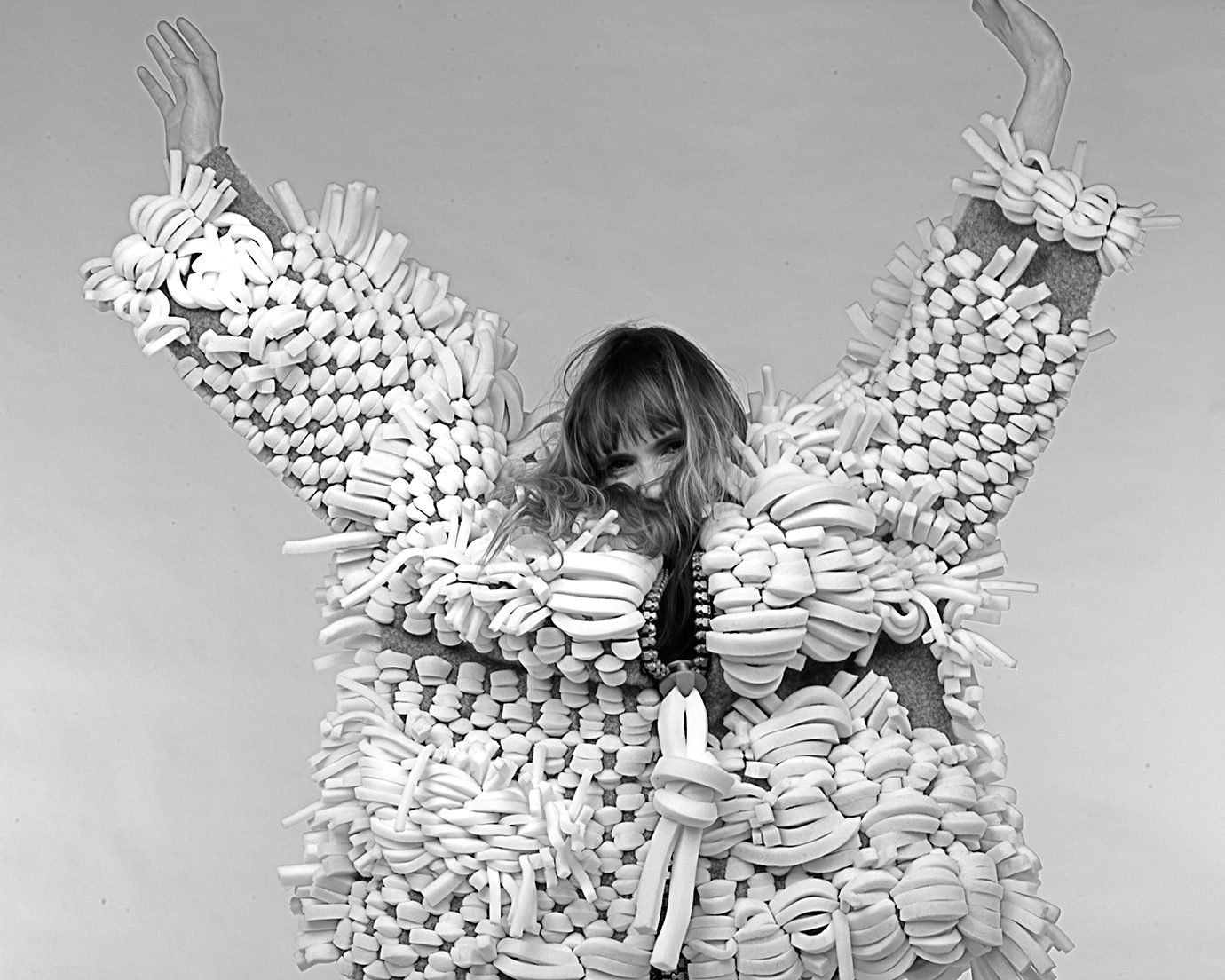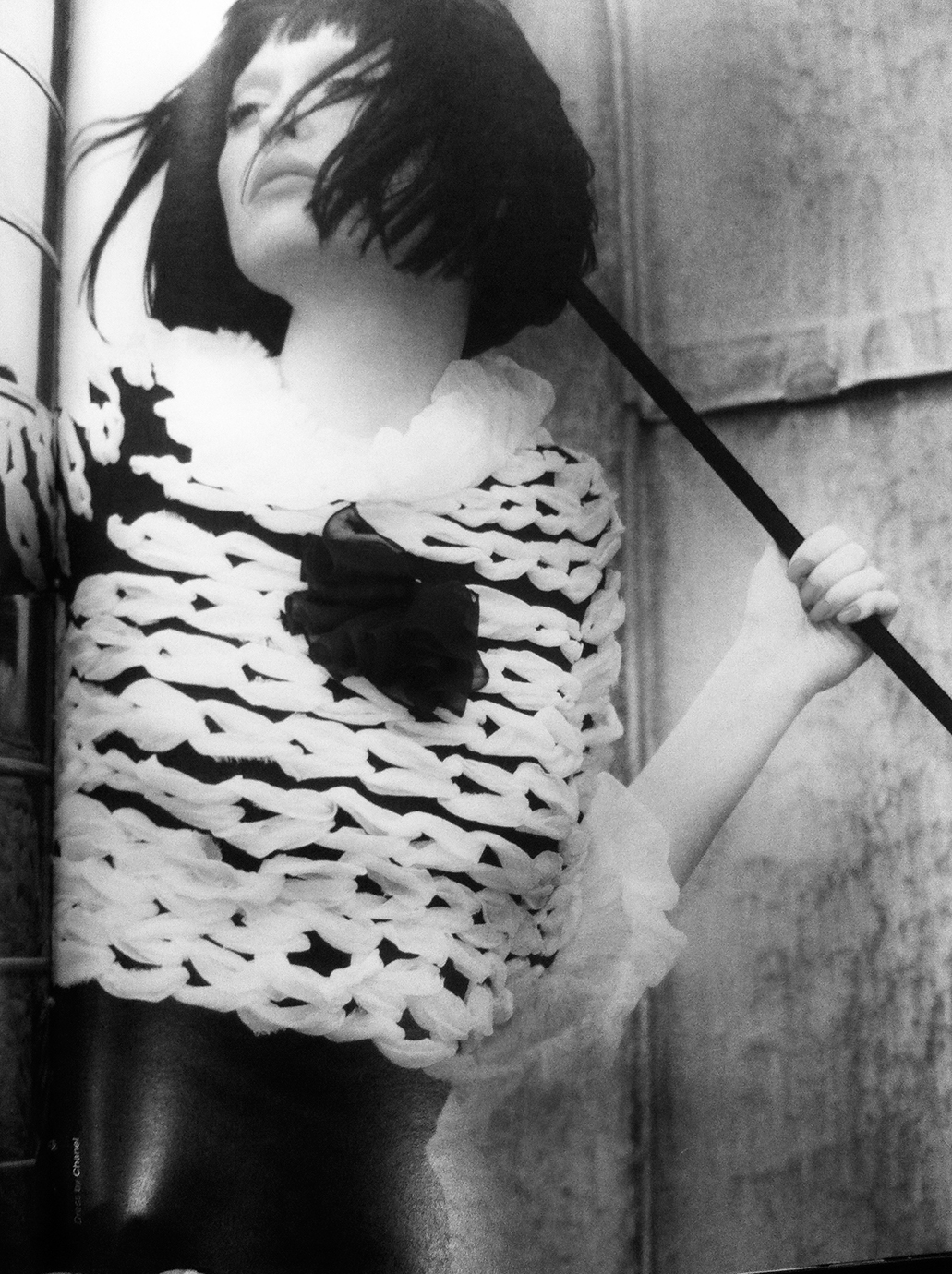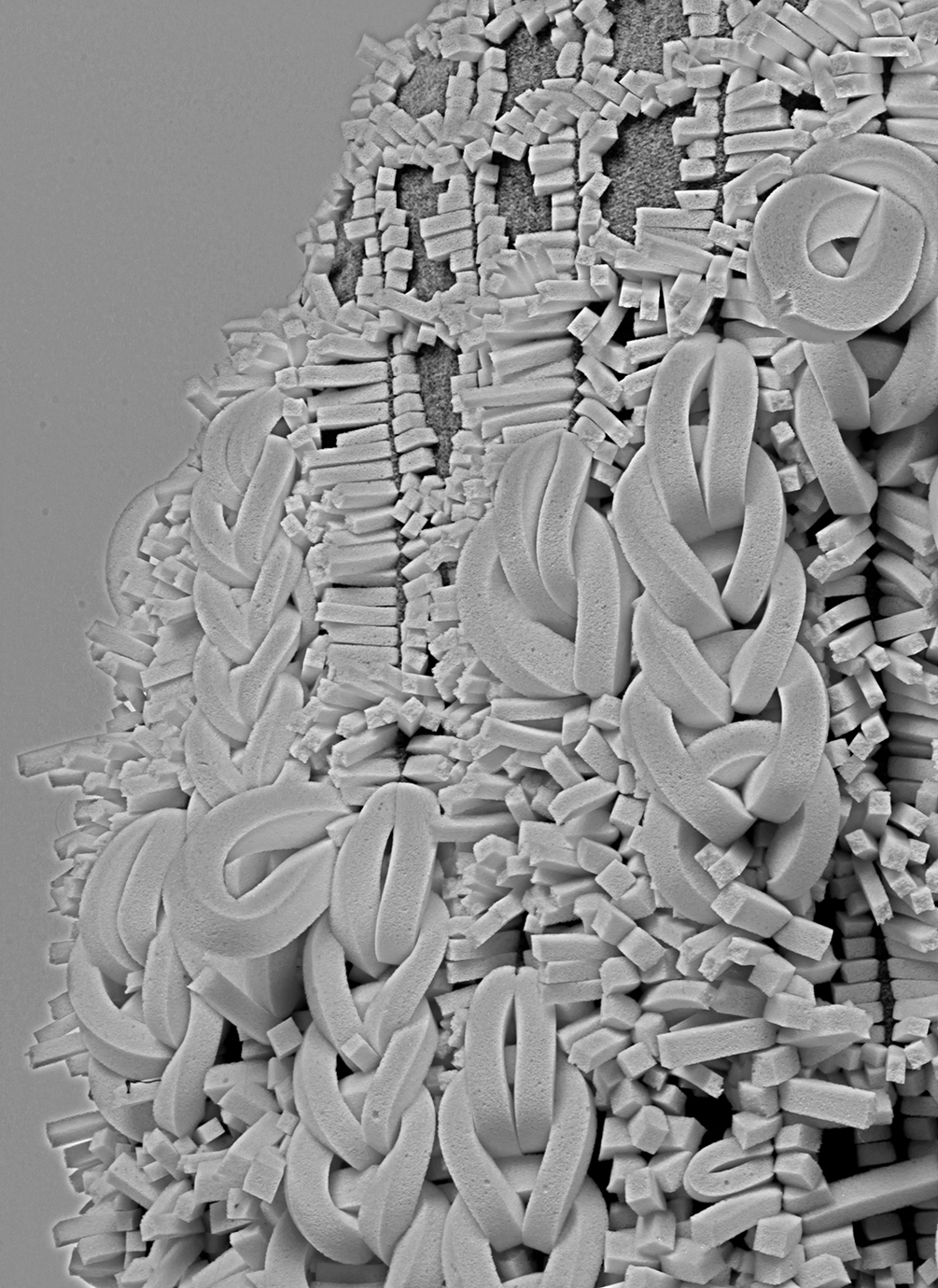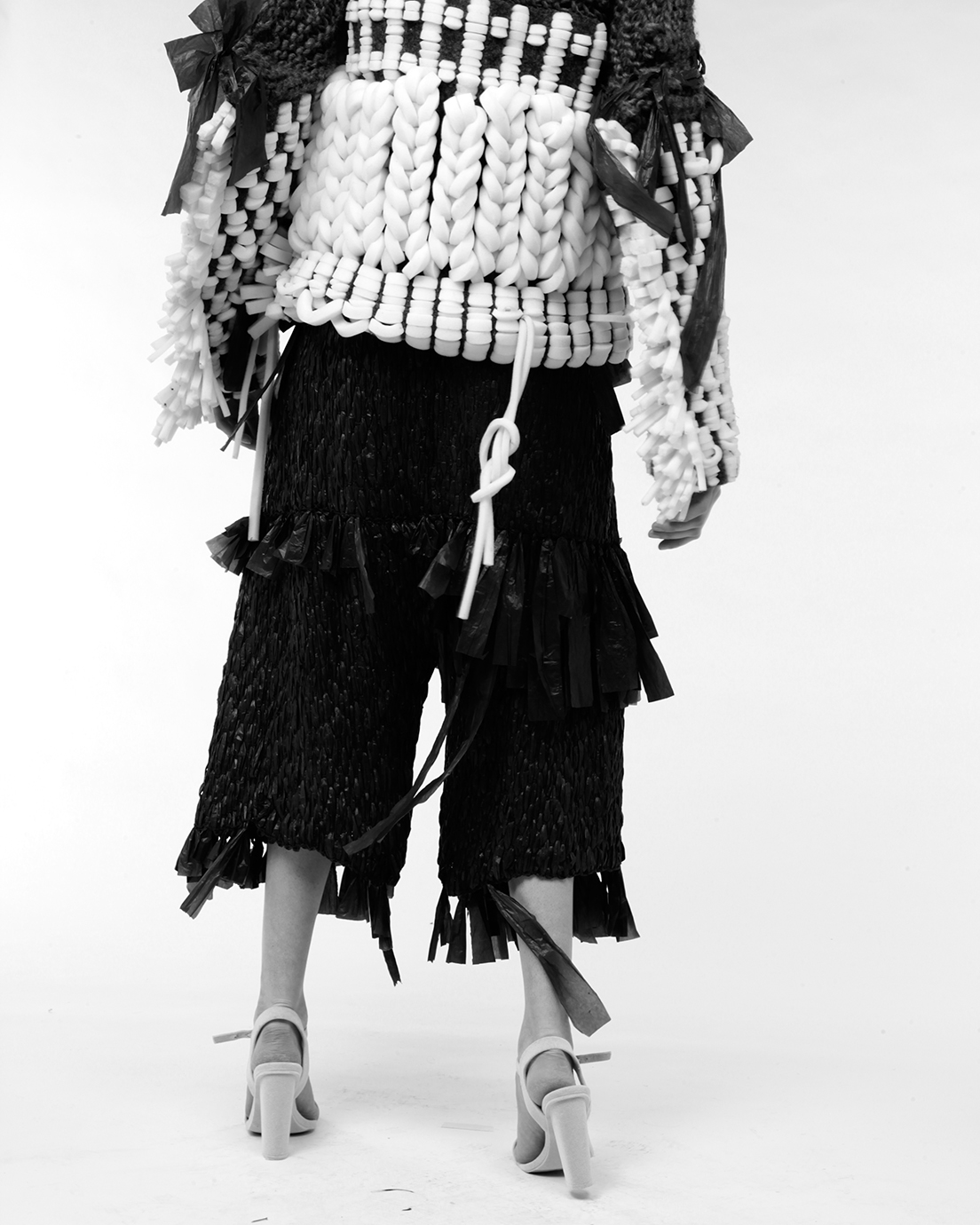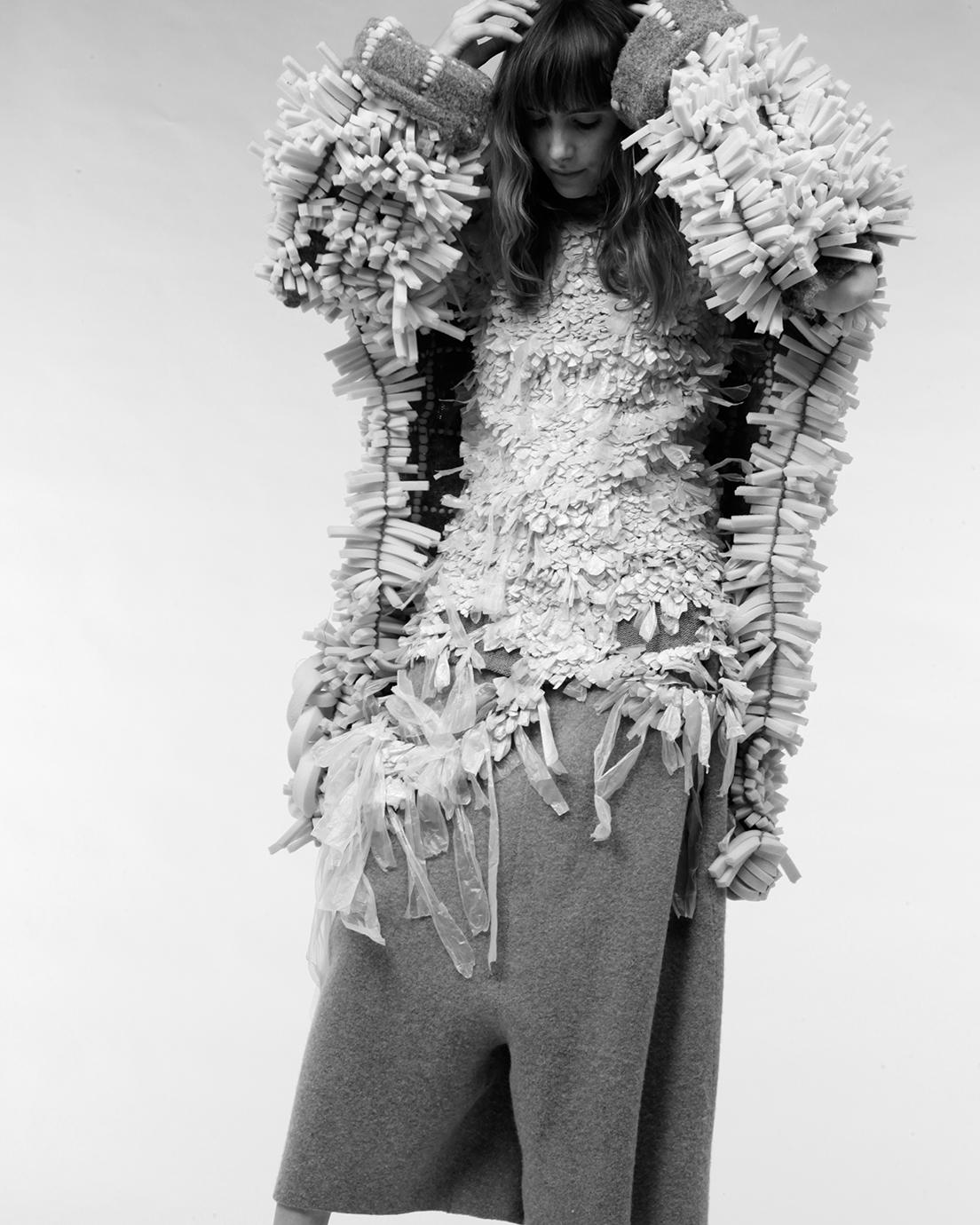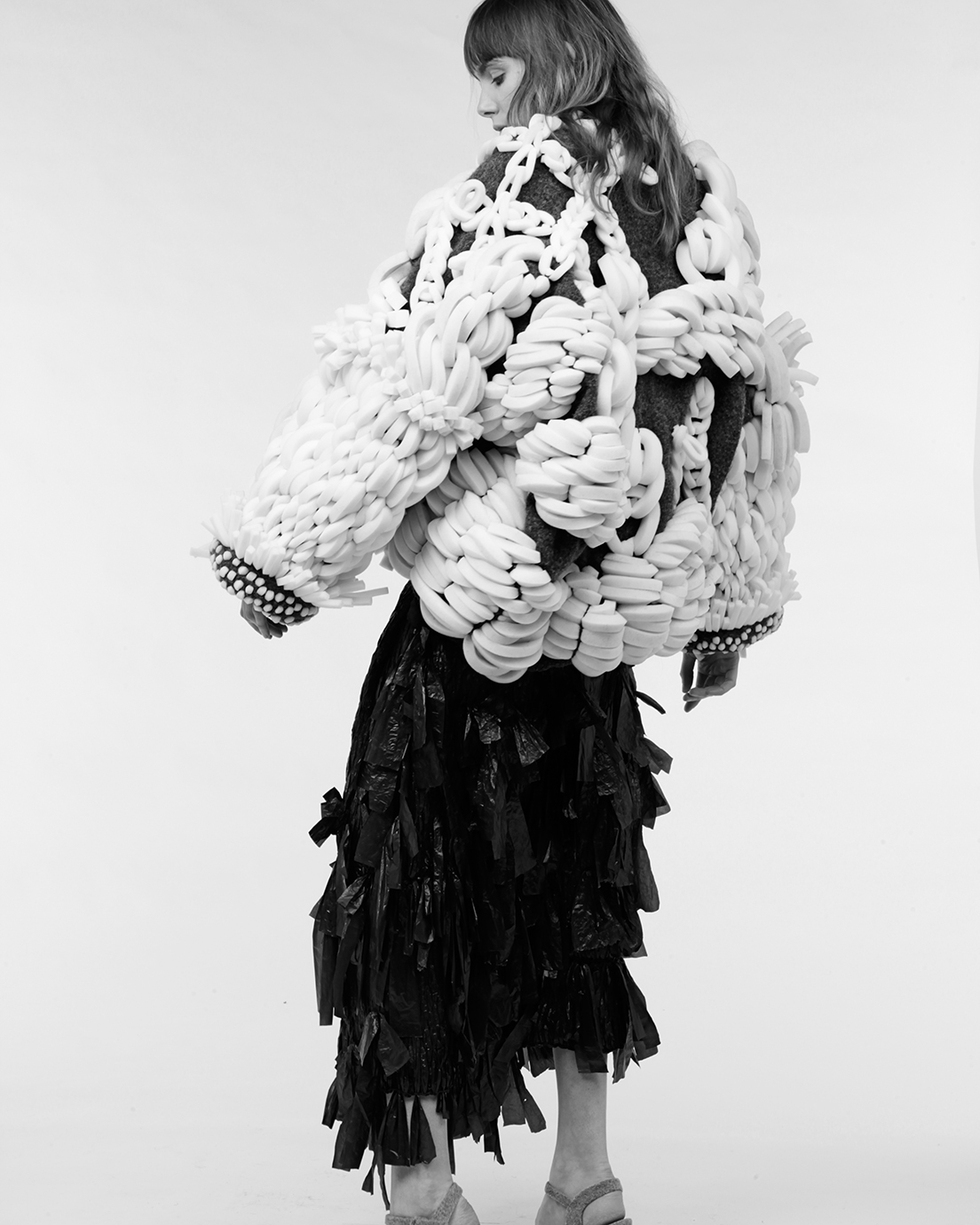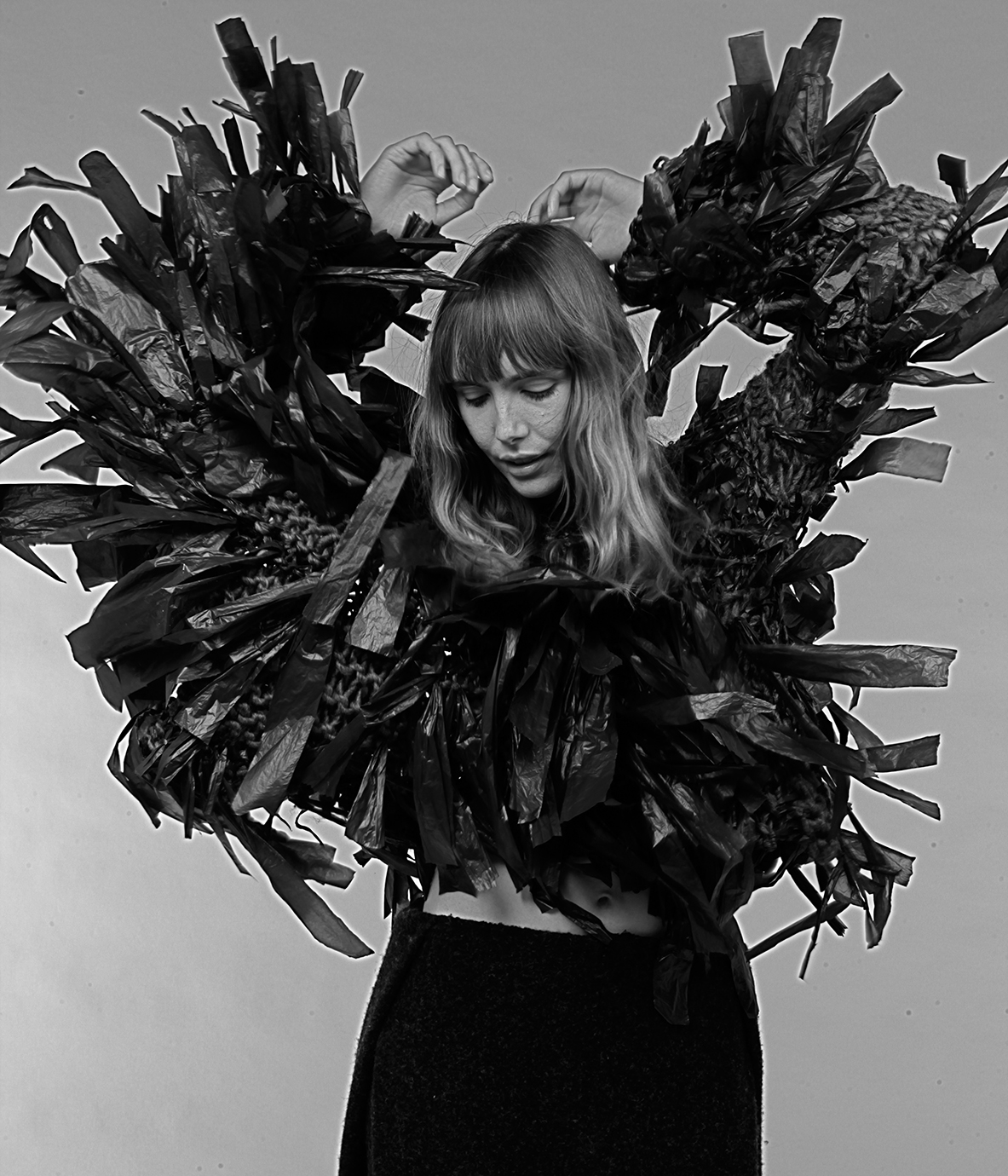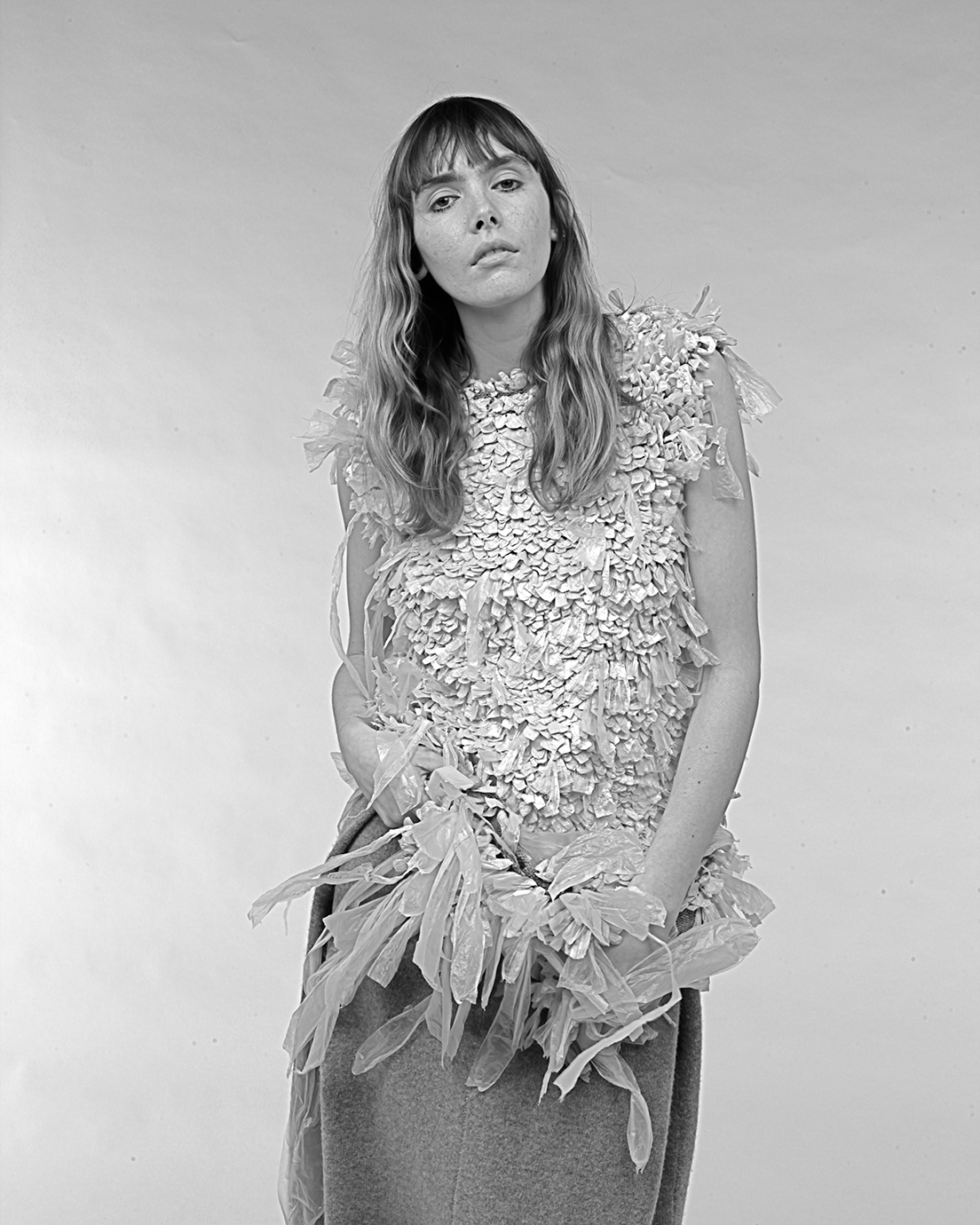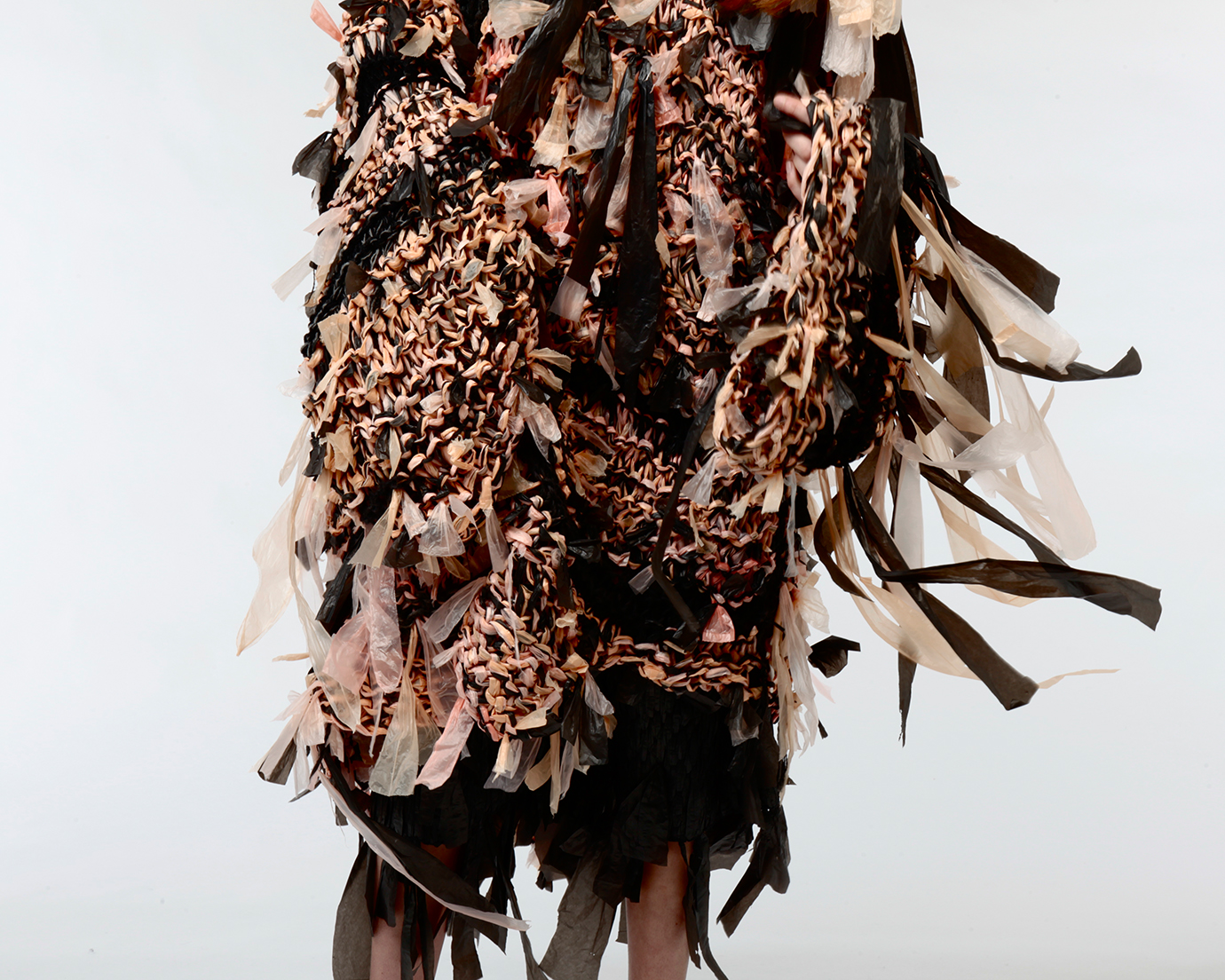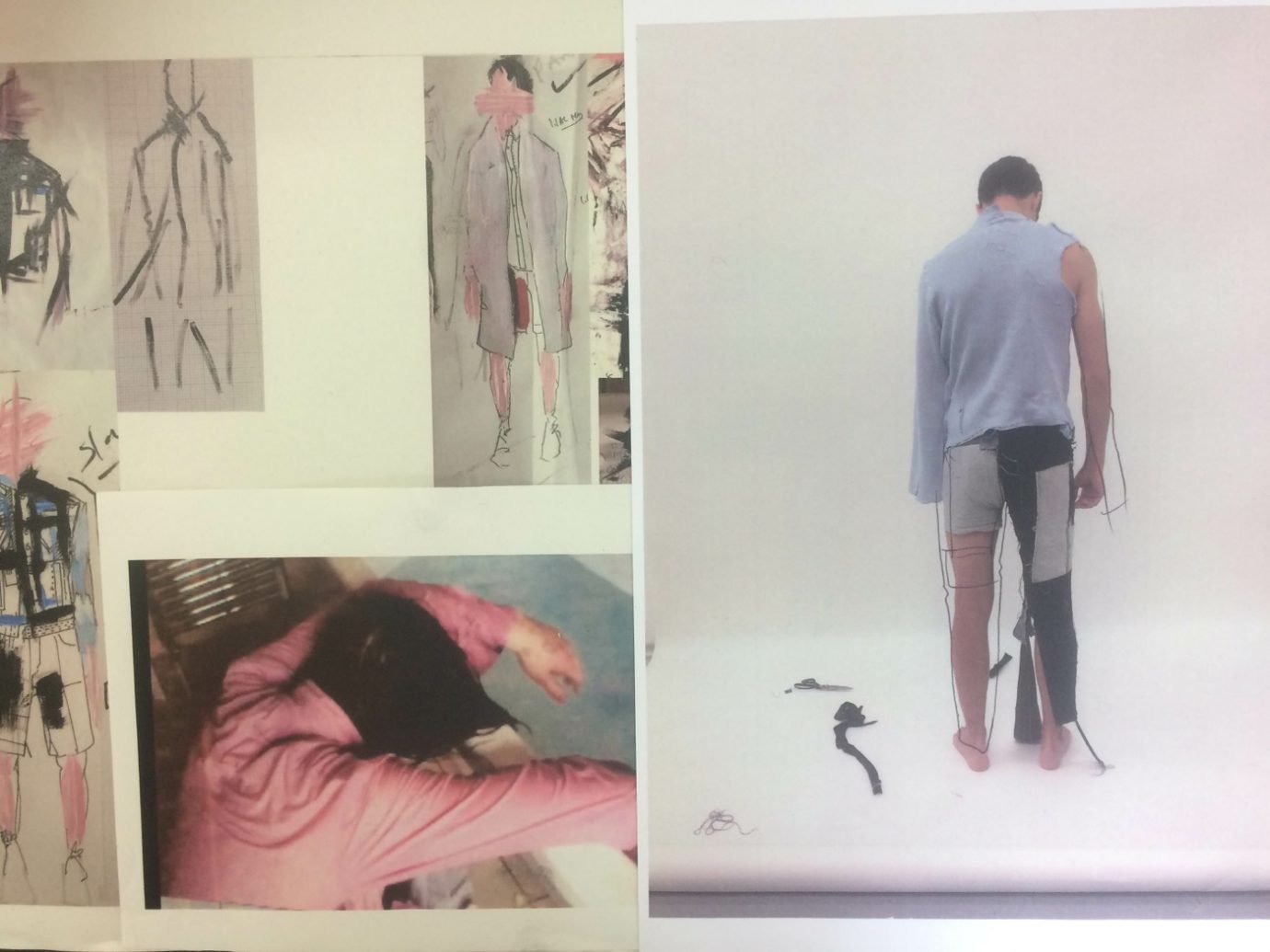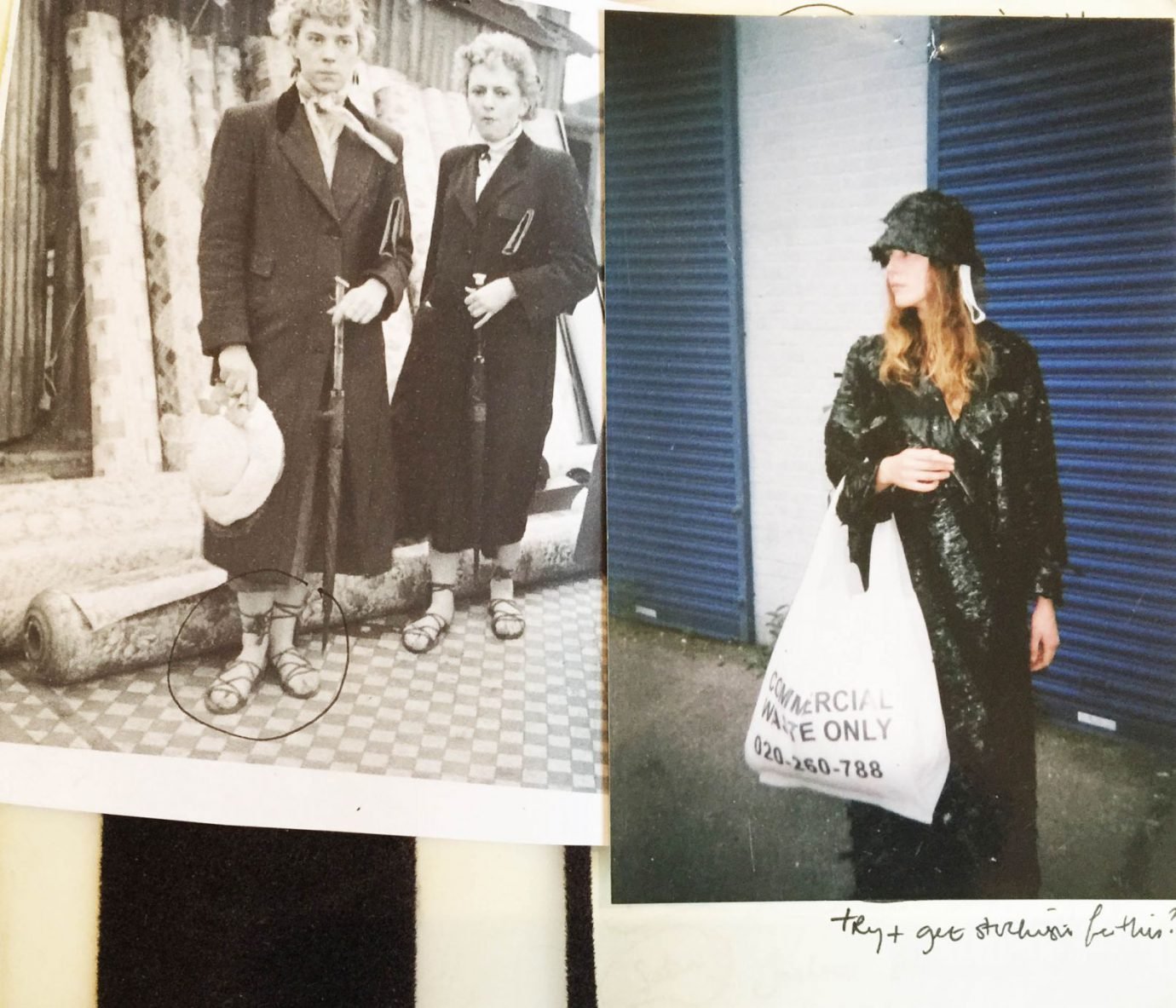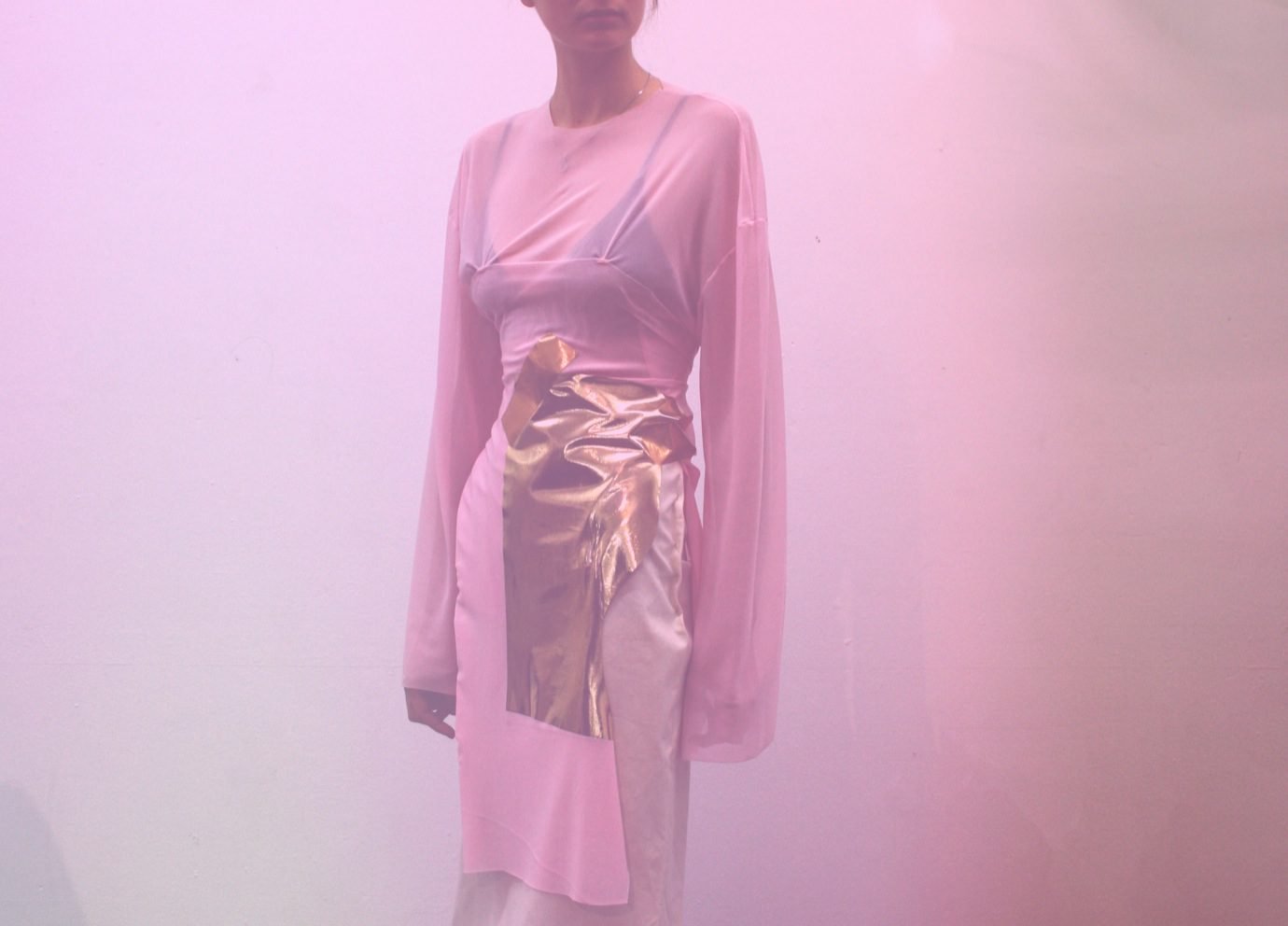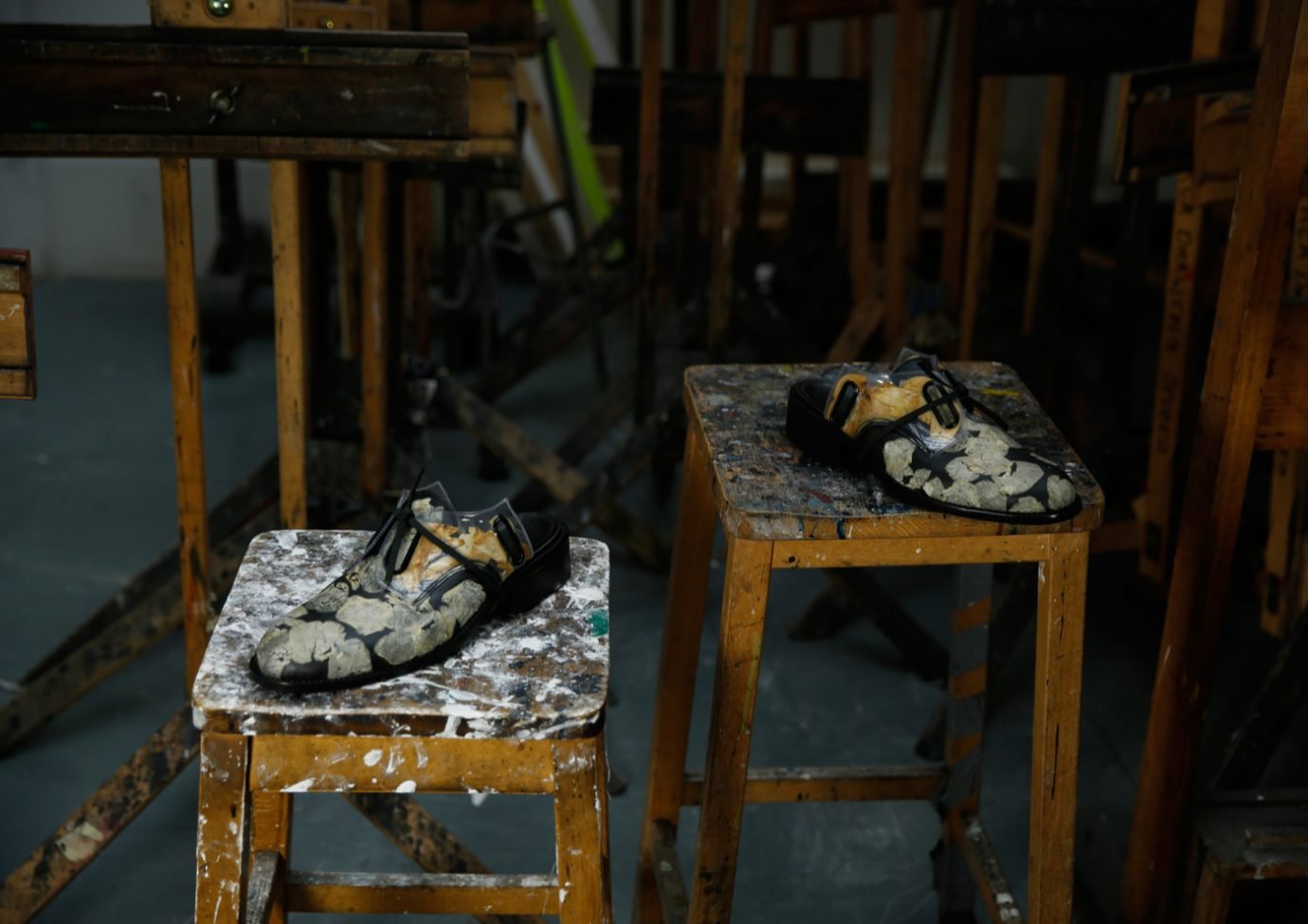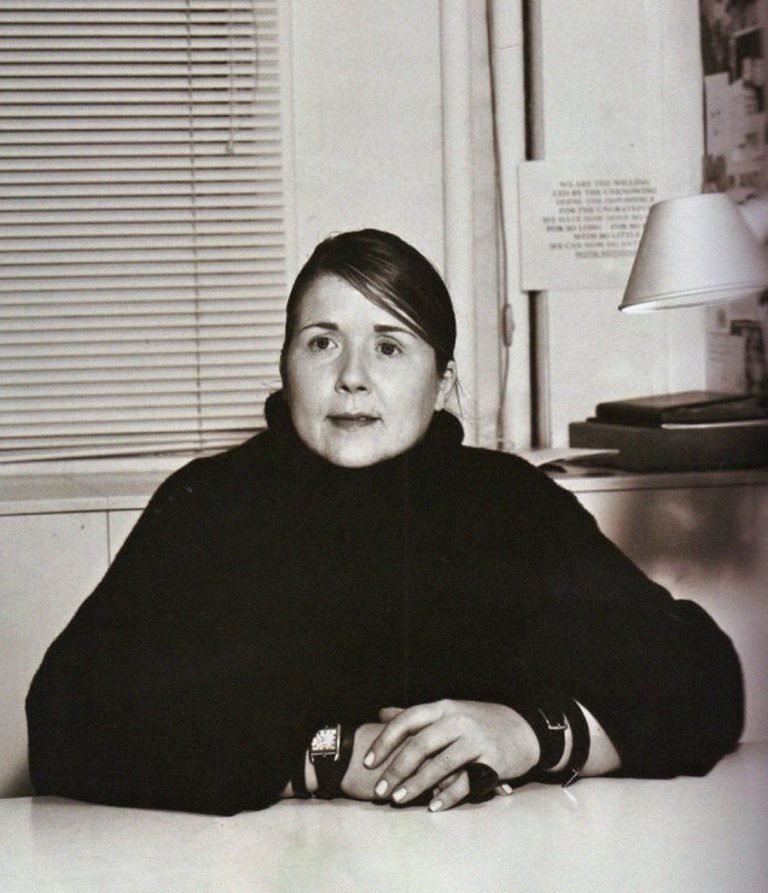You looked at old dressing gowns and towelling — why did you choose these subjects?
I think subconsciously I’ve always loved the idea of taking something so normal, so ordinary, and so bog standard and cheap, and trying to elevate it and take it out of context by making something else with it. I suppose my mind made a natural progression, from doing laundry bags in my BA to then looking at towelling, which might have something to do with laundry or washing. The process began by finding this old towel from a flea market. I really loved its raised pattern, and it all started from thinking about how I could recreate it.
From plastic bags to foam tubes, the contents of the collection take robust manmade material. What gave you the impetus to take these materials and how do you source them?
The cheaper, the better. I’m always thinking how can I create something really luxurious-looking out of something that doesn’t cost anything. I’ve been playing around with bin liners for quite a while, and I think it’s always been something that I put in my work. I just sourced from one-pound shops where you can get loads of colours and varieties. I think what all knitters think about is how they want it to look, and how they can achieve what’s in their mind – what yarn, what gage, what techniques can create that? I always think about using unusual materials just to create that effect.
For towelling, I was thinking of sponge: it’s light, it keeps shape and it’s cheap. It’s a really basic material that can be used for padding, but if you can use it in other ways then it could be embellishment or a pattern, and it could be something better than just padding.
It’s the same with bin-liners: it doesn’t fray, but it’s still hard-looking in a way. It’s cheap and it’s got that raffia kind of look. I was playing around with leather for a little while, but then I suddenly thought it was quite expensive, and I thought about how I could create the same. You don’t need to buy loads of expensive stuff, and I think the more limited you are financially, the more creative you have to be. But of course, if I got some expensive stuff, I would work with it too! I wouldn’t say “no, sorry I’m going to refuse that silk and leather and get this stuff out of my kitchen cupboard” [laughs].

